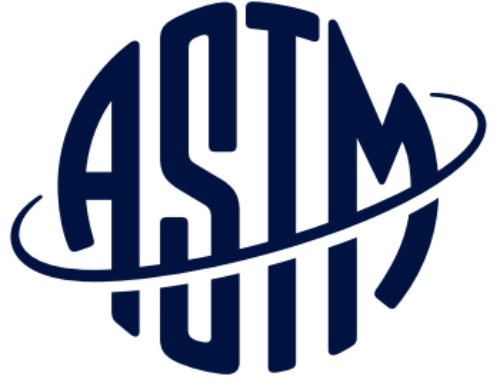This is the final installment of a four-part series on the history of fatigue analysis. It has been adapted from the upcoming Ph.D. dissertation of VEXTEC’s Robert McDaniels. You can read Part 1 here, Part 2 here, and Part 3 here.
The 1950’s brought another of the seminal events in the history of fatigue. The world’s first commercial airliner, the DeHavilland Comet, suffered a series of catastrophic crashes in 1953-1954 that resulted in the deaths of all of the crew and passengers [3, 16-18]. After a thorough investigation that included both the analysis of recovered aircraft, and the testing of an entire aircraft that simulated the pressurization and depressurization of the entire aircraft during flight, it was determined that the cause of the mishaps was fatigue cracks that had originated in rivet holes near the square portholes in the fuselage [3]. The cause of the crashes was found to be the stress concentration factor of the corners of the square portholes, along with the procedure used to manufacture the holes [3, 16-18]. The year 1954 saw two researchers, S.S. Manson and L.F. Coffin, simultaneously determine that fatigue damage is always the result of plastic strain [3, 6], which advanced the study of low-cycle fatigue, and led to the fatigue analysis model that bears their names. The mechanisms of fatigue crack initiation that are now commonly understood were first proposed and identified in the late 1950’s by W.A. Wood [19, 20].
In 1957, George Irwin extended the previous work of Alan Griffith to include ductile materials, such as metals, using linear elastic fracture mechanics [3]. Irwin also introduced the concept of the Stress Intensity Factor [6, 14]. The pioneering work of Griffith and Irwin was fulfilled in 1961, when Paul Paris developed the fatigue crack growth law which bears his name [3, 6]. This revolutionized the field of fatigue research and analysis because it allowed engineers to analyze and assess the growth of cracks with only a knowledge of the far-field stresses and the material geometry [3]. Also in 1961 was the observation by P.J.E. Forsyth that fatigue crack growth can be divided into 2 separate phase, which he called Stage I and Stage II. [21]
The fledgling field of fracture mechanics research was further advanced in 1970, when Wolf Elder introduced the concept of crack closure [6]. In crack closure, the rate of fatigue crack growth is reduced due to the fact that the crack tip is wedged open by surface roughness in the fracture surface in the wake of the crack tip, or another mecanism, such as corrosion, or plastic deformation [3, 6]. A series of aircraft mishaps in the late 1960’s caused the study of fracture mechanics to gain new followers in the USAF [6], when an F-111 aircraft suffered a mishap after only 100 hours of flight due to a crack in the wing structure. The USAF then embarked on an extensive program to improve the durability of its aircraft structures [6]. The outcome of this program was a new set of specifications for all structural metals in the “Damage Tolerance Design Handbook”, and a series of conferences on “Structural Integrity” that have been held regularly since the 1980’s [6]. As a continuation and expansion of that work, the Defense Advanced Projects Development Agency (DARPA), a research organization within the Department of Defense (DoD), created a program called the Structural Integrity Prognosis System (SIPS). The purpose of SIPS was to develop better ways to predict the fatigue durability of complex aviation structures. VEXTEC was one of the companies that participated in the SIPS program [22-24].
The next significant contribution to fatigue research came in 1968, when Tatsuo Endo and M. Matsuishi first introduced the concept of rainflow counting [6, 19, 25, 26]. This would lead to another direction of research, which concentrated on variable loading, and the effects of the sequencing of loads, through such concepts as power spectral density, which expand on the work that resulted in Miners’s rule [6]. Another avenue of research that arose in the late 1970’s was the idea of multi-site fatigue damage, which is now called widespread fatigue damage [6]. This work took on new importance in 1988 after the mishap of Aloha Flight 243 [27]. In this incident, a Boeing 737 suffered a casualty in which a large section of the fuselage separated during flight, which resulted in the death of a flight attendant [27]. The investigation revealed that cause of the incident was multiple site fatigue damage in the skin panels near rivet holes at a lap joint [27].
This is not the end of the story of fatigue research. In fact, this blog series has only illustrated the most historically-significant contributions that have been made in since Wilhelm Albert reported his first observations in 1838 [5, 6]. A brief search in a database of academic papers yields over 34,000 papers written on topics related to fatigue, nearly 17,000 of those being written just since the year 2000. This illustrates the expanding interest in the many aspects of fatigue research, and the accidents and mishaps described in this short history demonstrates the importance of continuing this research, and how much more work needs to be done in this field. As demands of fuel efficiency and environmental concerns increase, the need for lighter structures to carry more weight will put tremendous pressure on engineers and operators of all types of vehicles to design and maintain components that operate more economically, while simultaneously being safer.
REFERENCES
- Turnbull, H.W. ed., The Correspondence of Isaac Newton: 1661-1675, Volume 1, London, UK: Published for the Royal Society at the University Press. p. 416 (1959).
- “Wilhelm Albert”, Wilhelm Albert. Wikipedia. created 06 February 2016, accessed 31 Dec 2016.
- Suresh, S. Fatigue of Materials. pp. 1-11 (1998).
- Hansson, T.J. “Fatigue Failure Mechanisms and Fatigue Testing” NATO Science and Technology Organization Educational Notes. EN-AVT-207-14 (2012).
- Albert, W. A. J. “Über Treibseile am Harz” Archive für Mineralogie Geognosie Bergbau und Hüttenkunde, vol. 10, pp. 215-34 (1838).
- Schutz, W. “A History of Fatigue,” Engineering Fracture Mechanics, vol. 54. No. 2, pp. 263-300 (1996).
- Bhat, S. and Patibandla, R. “Metal Fatigue and Basic Theoretical Models: A Review,” Alloy Steel -Properties and Use. Dr. Eduardo Valencia Morales, ed. (2011).
- Mitchell, M.R. Fatigue, ASM Handbook, Vol. 19, 554-555. Materials Park, Ohio (1996).
- Timoshenko, S.P. History of the Strength of Materials. pp. 162-173 (1983).
- Bathias, C., and Pineau, A. Fatigue of Materials (2010).
- “The Versailles Rail Accident,” Versailles Rail Accident. Wikipedia. Created 22 November 2016, accessed 31 Dec 2016.
- ASM HANDBOOK. Vol 19, Fatigue and Fracture. ASM International. pp.76-86 (1996).
- “August Wohler,” August Wohler. Wikipedia. Created 21 October 2016, accessed 02 January 2017.
- ASM dictionary, ASM International. p. 454 (1992).
- “Sir James Alfred Ewing,” Sir James Alfred Ewing. Wikipedia. Created 05 August 2016, accessed 29 January 2017.
- “de Havilland Comet,” de Havilland Comet. Wikipedia. Created 26 January 2017, accessed 28 January 2017.
- “BOAC Flight 781,” BOAC Flight 781. Wikipedia. Created 09 January 2017, accessed 28 January 2017.
- “South African Airways Flight 201,” South African Airways Flight 201. Wikipedia. Created 05 January 2017, accessed 28 January 2017.
- Suresh, S. Fatigue of Materials. pp. 132-162 (1998).
- Dieter, G. Mechanical Metallurgy. pp. 394-398 (1986).
- Bannantine, J. Fundamentals of Metal Fatigue Analysis. pg. 244 (1990).
- Papazian, J., Agnagnostou, E., et al. Structural Integrity Prognosis System (SIPS) Final Report. Northrup Grumman Corporation (2009).
- Line, K., McDaniels, R, Pulikollu, R, Tryon R. Crack Nucleation Prediction Through Surface Roughness Measurement Phase I Final Report. VEXTEC Corporation (2008).
- Tryon, R., McDaniels, R., Oja, M., Matthews, R. Crack Nucleation Prediction Through Surface Roughness Measurement Phase II Final Report. VEXTEC Corporation (2011).
- Hertzberg, R.W. Deformation and Fracture Mechanics of Engineering Materials. pp. 570-572 (1996).
- Bannantine, J. Fundamentals of Metal Fatigue Analysis. pp. 189-196 (1990).
- National Transportation Safety Board Summary Report on Aloha Flight 243 (June 14, 1989).




Leave A Comment